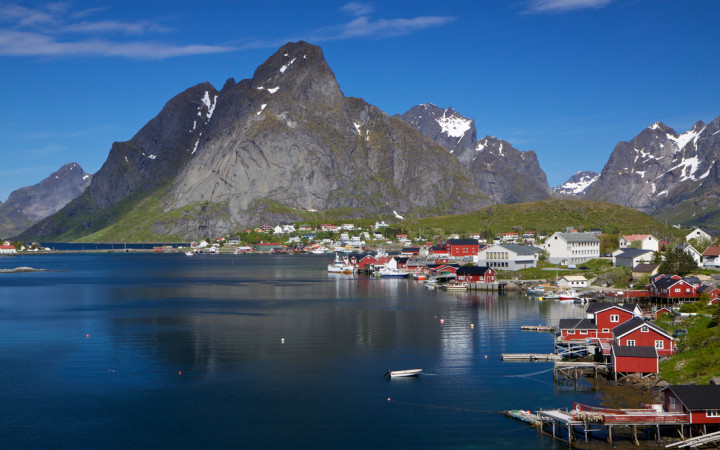When you think of the Northern Lights and fjords, what countries do you think of? Norway? Sweden? Maybe you've heard these countries referred to as Scandinavian countries. But just where is Scandinavia?
Scandinavia is an area of Northern Europe that shares a common historical, cultural, and linguistic Germanic heritage. This area includes the modern countries of Denmark, Norway, and Sweden.
Scandinavia is a cultural term that is often confused with a similar geographical term: Scandinavian Peninsula. The Scandinavian Peninsula is made up of the modern countries of Norway, Sweden, and Finland. Scientists believe the Scandinavian Peninsula is the largest peninsula in Europe, measuring about 1,150 miles long and anywhere from 230 to 500 miles wide.
Finland, although a part of the Scandinavian Peninsula, is not usually considered a Scandinavian country. Despite its close location to Sweden and Norway, it doesn't share the same Germanic cultural and linguistic heritage as those countries.
Sometimes the Scandinavian countries are grouped with Finland and Iceland and referred to as the Nordic countries. This is also a geographical term that recognizes the similar location and climate of these countries.
The Scandinavian languages — Danish, Norwegian, and Swedish — are similar and can, with a little training, be understood by people in each of the Scandinavian countries. Finnish — spoken in Finland, of course — is entirely unrelated to the Scandinavian languages, which further explains why Finland is usually not considered Scandinavian.
The Scandinavian people are descendants of old Germanic tribes who moved into the area from Northern Germany. These tribes spoke an old Germanic language that evolved into a language called Old Norse.
In the Early Middle Ages, Scandinavians were called Norsemen. The Norse culture gave rise to unique cultural groups, such as the Vikings.
Even though the Scandinavian countries share a common heritage, the modern countries of Denmark, Norway, and Sweden are quite diverse geographically. From Norway's fjords to Denmark's lowlands to Sweden's archipelagos, the lands of Scandinavia take on many forms.
Most people live in the warmer, southern areas of these countries. The far northern parts of Norway and Sweden, however, approach the Arctic Circle and can be quite cold. In today's Scandinavia, you can find both warm, inviting coastlines and cold, hard tundra!




